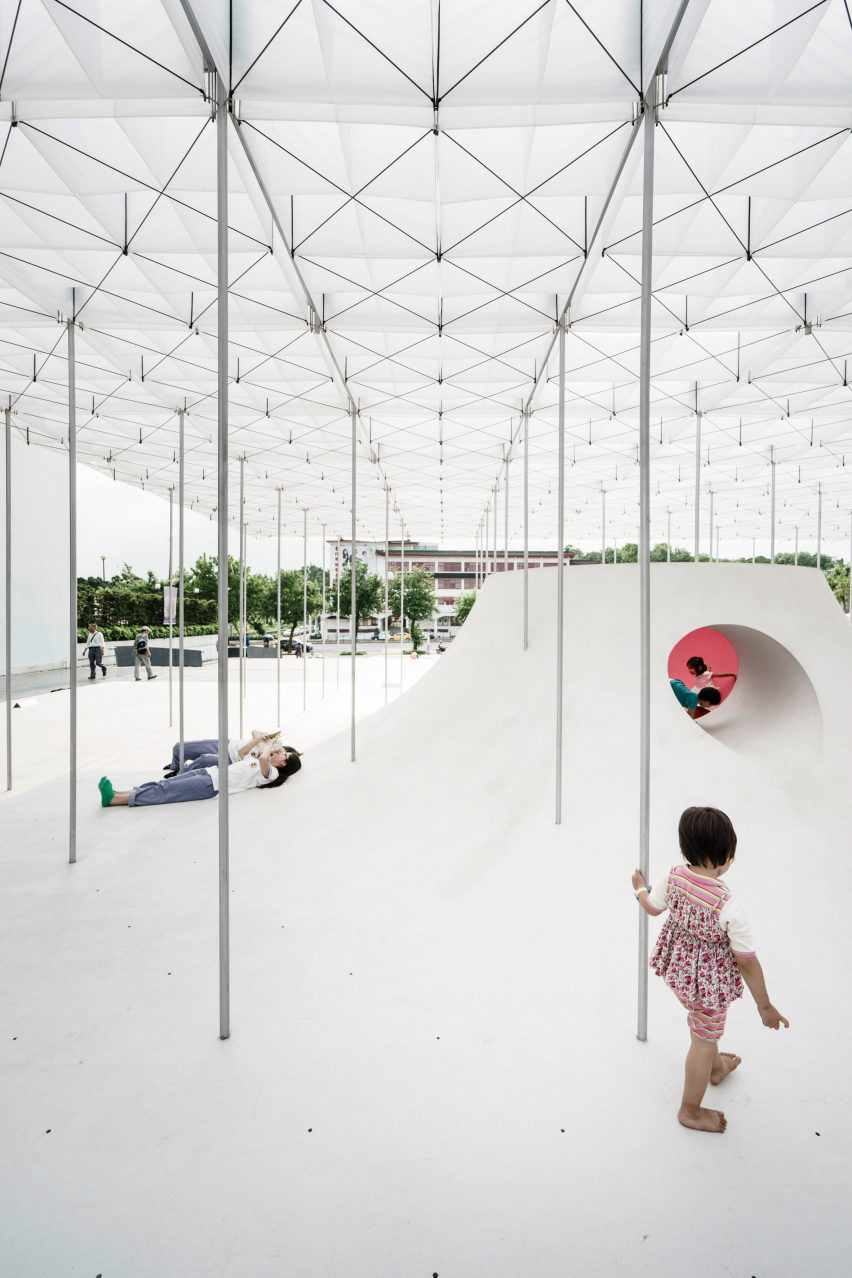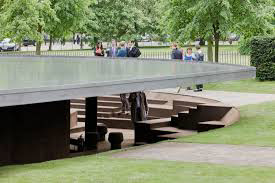How can form determine function? Can we challenge what space is without using hard boundaries to divide it? How can light and form play a part in this?
Taipei Fine Arts Museum Pavilion - Shen Ting Tseng Architects




This pavilion plays with form to suggest space without having "rooms" but allows a community and the users to dictate a function. It gives hints but acts almost as a canvas for imagination of what the space and volume can be. Bold colours are used to exaggerate forms and suggest space but ultimately the pavilion is performative, acting as a stage.
This is further explored through light and materiality as well as the form. The canopy consisted of 320 box-shaped nylon kites made by local manufacturer Huang Jingzhen Art Kites, which were attached to the podium by a framework of slender steel columns. The kites were free to move gently when the wind blew and their surfaces helped to shade the space beneath them, creating a dappled pattern of light and shadow that shifted throughout the day.
A square base made from plywood and carbon fibre was extruded into a hill-like form at the centre of the pavilion. Inside the raised volume was a pink spherical void that could be reached through a circular opening. "When entering into it, a unique sound effect was revealed by the spherical space," the architects described, "in which the natural elements were interwoven together, leading visitors' perception into a sense of serenity."
2012 Serpentine Pavilion - Herzog and de Meuron + Ai Weiwei





The 2012 Serpentine Pavilion successfully plays with form to encourage a communal focus. The exploration into bringing the surrounding area into the space through differing levels facilitates communal functions and, like the Taipei Fine Arts Museum Pavilion, allows users to dictate the function of the space and massings. The cavities and volumes can be used for seating, define areas or the levels can be used for communal functions. They are multi purpose, letting the users dictate where the "rooms" are.
This pavilion successfully plays with what space is and defines boundaries socially, letting the users adapt the space to them, not adapting to the space.
Carrying these ideas through to a massing proposal for my own pavilions. This pavilion uses art to create a flow through the space which can then be manipulated to help flow through Fratton through it's placement.
How do users interact with volume? Can we create a space that is user defined, where a community chooses it's function. Can it evolve like street art where artists add to a section of wall? Could it adapt and grow?